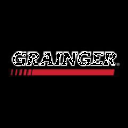Grainger exhibits strong business quality through its customer-centric focus and significant technological investments. However, its dependency on market conditions poses risks. Future prospects are bolstered by innovation and growth strategies, though a cautious outlook suggests challenges ahead.
Analysis Date: January 31, 2025
Last Updated: March 12, 2025
Trailing Twelve Months (TTM) values provide a view of the company's performance over the last year.
Graham Value Metrics
Benjamin Graham's value investing approach focuses on finding stocks with a significant margin of safety between their intrinsic value and market price.
Intrinsic Value
Estimated fair value based on Graham's formula
$1512.27
Current Market Price: $928.03
IV/P Ratio: 1.63x (>1.0 indicates undervalued)
Margin of Safety
Gap between intrinsic value and market price
39.0%
Graham recommended a minimum of 20-30% margin of safety
Higher values indicate a greater potential discount to fair value
ROE: 40.5997447894513
ROA: 5.379997734737795
Gross Profit Margin: 39.363932898415655
Net Profit Margin: 11.119524697110904
Trailing Twelve Months (TTM) values provide a view of the company's performance over the last year.
High Return on Equity
A return on equity of 40.60% indicates strong profitability relative to shareholders' equity, showcasing effective use of capital.
Solid Gross Profit Margin
39.36
Gross Profit Margin
The gross profit margin of 39.36% reflects a strong capability to maintain profitability at the core operational level.
Moderate Net Profit Margin
The net profit margin of 11.12% suggests that while the company is profitable, there may be room for improvement in controlling expenses relative to revenue.
Operating Profit Margin Concerns
15.36
Operating Profit Margin
An operating profit margin of 15.36% indicates potential inefficiencies in operating expenses that could be addressed to enhance profitability.
About Profitability Metrics
Profitability metrics measure a company's ability to generate earnings relative to its revenue, operating costs, and other relevant metrics. Higher values generally indicate better performance.
Return on Equity (ROE)
Measures how efficiently a company uses its equity to generate profits
40.60%
10%
15%
Higher values indicate better returns for shareholders
TTM (as of 2025-04-16)
Return on Assets (ROA)
Measures how efficiently a company uses its assets to generate profits
5.38%
3%
7%
Higher values indicate better asset utilization
TTM (as of 2025-04-16)
Gross Profit Margin
Percentage of revenue retained after accounting for cost of goods sold
39.36%
20%
40%
Higher values indicate better efficiency in production
TTM (as of 2025-04-16)
Net Profit Margin
Percentage of revenue retained after accounting for all expenses
11.12%
8%
15%
Higher values indicate better overall profitability
TTM (as of 2025-04-16)
Strong Current Ratio
A current ratio of 2.49 indicates excellent short-term liquidity, suggesting the company can cover its short-term liabilities comfortably.
Low Debt Levels
With a debt-to-equity ratio of 0.30, the company maintains a conservative leverage profile, reducing financial risk.
Low Cash Ratio
The cash ratio of 0.45 indicates that while liquidity is generally strong, there is limited cash on hand relative to current liabilities, which could be a concern in a liquidity crunch.
Interest Coverage Ratio
34.25
Interest Coverage Ratio
While the interest coverage ratio of 34.25 is strong, it’s essential to monitor the sustainability of this coverage in the context of rising interest rates.
About Financial Health Metrics
Financial health metrics assess a company's ability to meet its financial obligations and its overall financial stability.
Debt to Equity Ratio
Total debt divided by total equity
0.30x
1.0x
2.0x
Lower values indicate less financial leverage and risk
Less than 1.0 is conservative, 1.0-2.0 is moderate, >2.0 indicates high risk
Q4 2024
Current Ratio
Current assets divided by current liabilities
2.49x
1.0x
2.0x
Higher values indicate better short-term liquidity
Less than 1.0 is concerning, 1.0-2.0 is adequate, greater than 2.0 is good
Q4 2024


